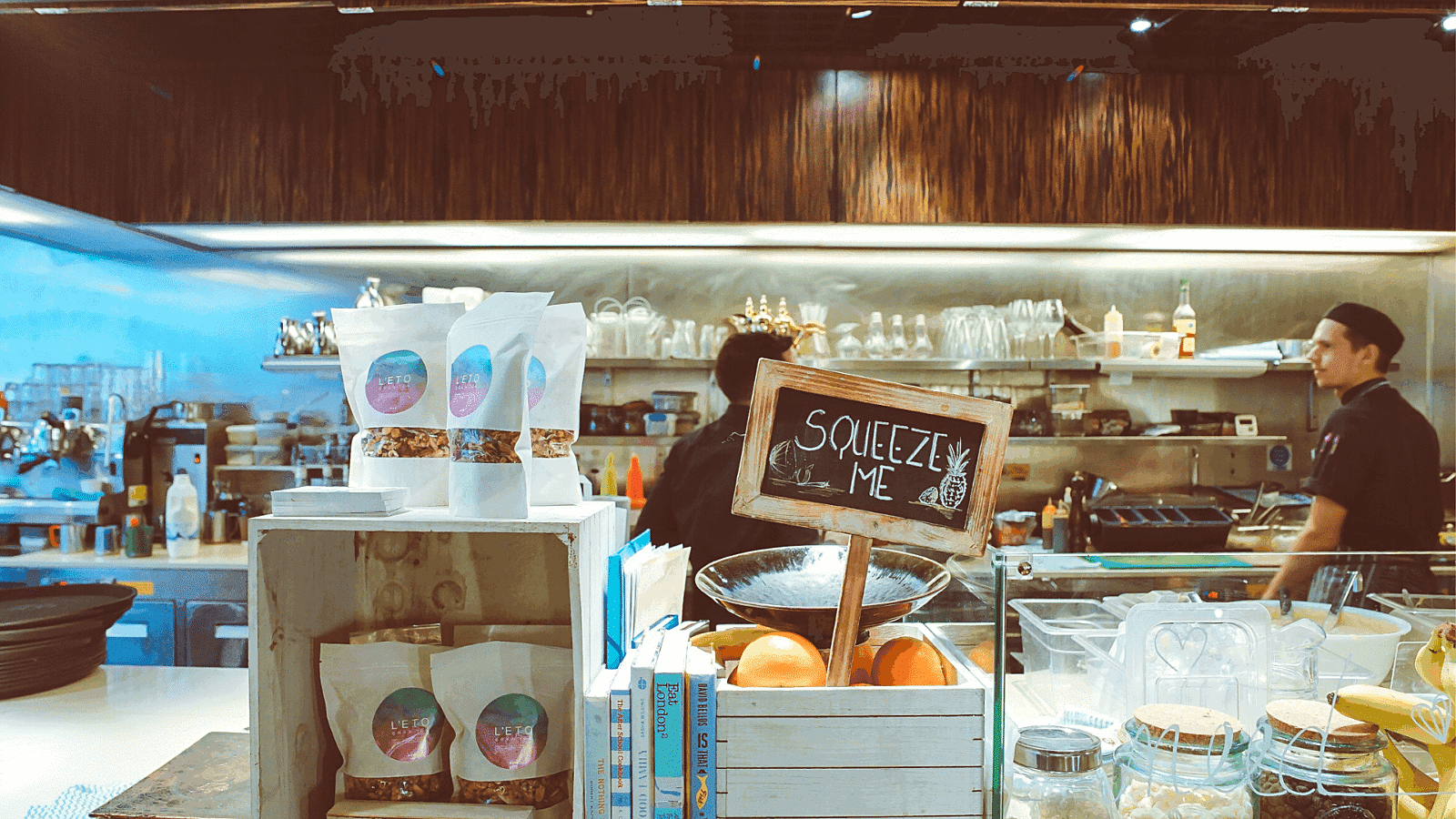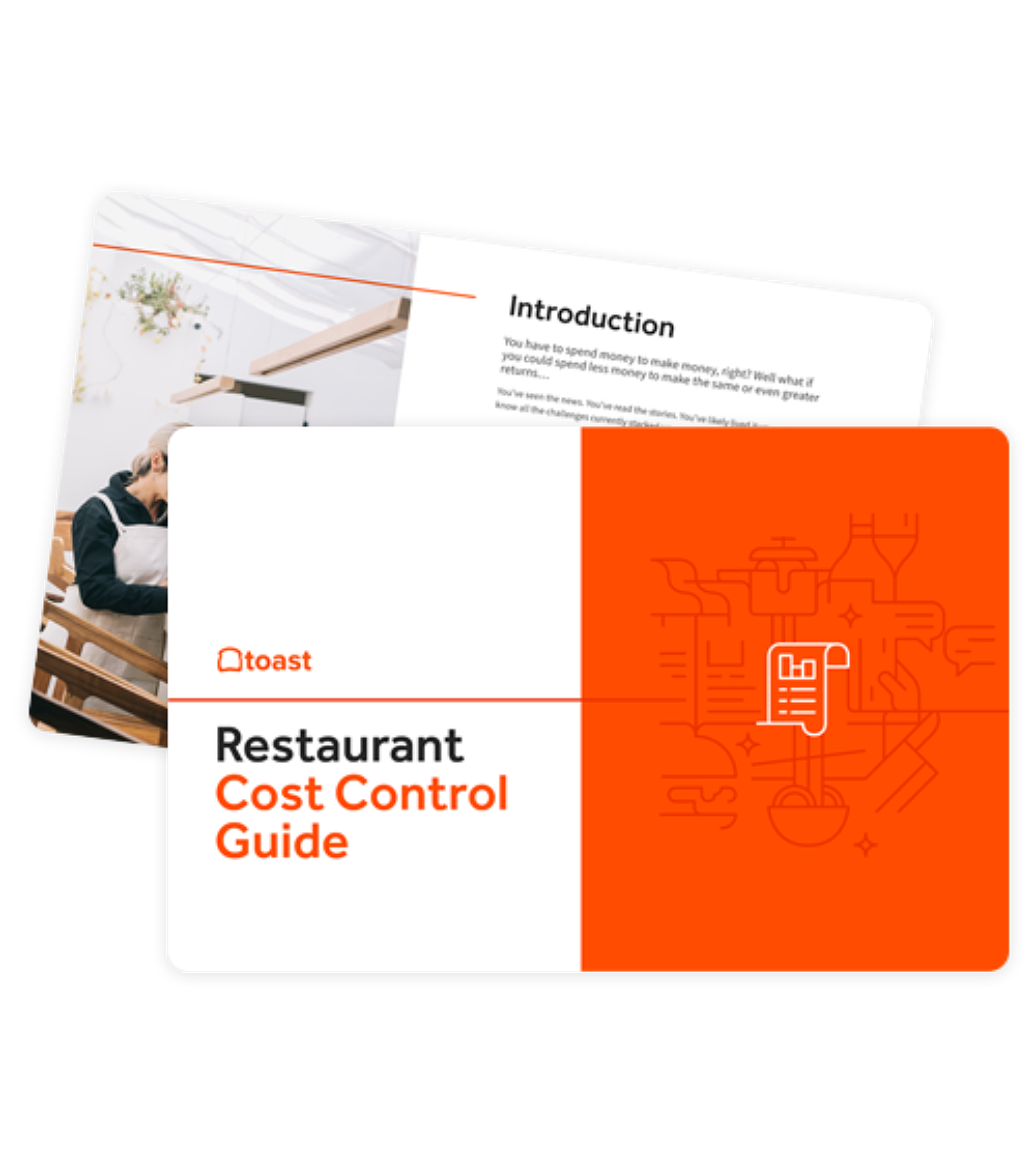
How to Reduce Your Average Restaurant Operating Costs
Learn more about the tools and levers that can help restaurants like you lower operating costs.

Justin GuinnAuthor


Restaurant Cost Control Guide
Use this guide to learn more about your restaurant costs, how to track them, and steps you can take to help maximize your profitability.
Get free downloadRestaurant operating costs are unavoidable. They’re literally the cost of doing business, as the saying goes — and are particularly buzzworthy these days, as ongoing food inflation has spiked the average operating costs for restaurants.
Though unavoidable, restaurant operating costs are controllable. Owners, operators, and managers don’t have to sit idly by as costs run rampant.
Read on to see proven tips, tricks, and tools that can help lower operating costs and wrangle them under control.
Restaurant Operator Insights Report
See insights from real restaurant operators which can help you benchmark your current and planned restaurant technology stack against your peers as we head into 2024 and beyond.

What are restaurant operating costs
Restaurant operating costs are all the costs associated with running your restaurant. These costs are typically broken into two categories: variable costs and fixed costs.
Variable restaurant costs include items that you can ramp up or ramp down depending on your own business changes, supplier price fluctuations, or any other reason.
For example, the cost of beef is variable. Supplier prices can fluctuate from week to week. Your costs will skyrocket if you run a holiday prime rib special. Or you could take beef off your menu entirely and see costs plummet.
Restaurant prime costs are the most important variable costs. Prime costs are the combination of your restaurant labor costs and costs of goods sold (COGS), which are all the ingredient and product costs associated with preparing your menu items.
Fixed restaurant costs are all those consistent costs that you can’t immediately impact nor will they impact you.
For example, any full-time salaries and benefits on your payroll are fixed costs. Taxes are also fixed costs. Another one that’s mostly fixed is your lease or mortgage. It’s “mostly fixed” because you could refinance or renegotiate if needed — more on that below.
5 tips for reducing the average operating costs for your restaurant
1. Try negotiating for more favorable terms
Negotiating is not for everyone. It can often be an incredibly difficult and uncomfortable process. It can also be as simple as asking and receiving. Either way, successful negotiations can be hugely impactful for lowering your costs.
A few examples of restaurant operating costs that you can negotiate include:
Lease payments — Depending on your relationship with your property manager, they may allow you to receive a slight or short-term discount if you renew early.
Supplier spend — Whether it’s your produce supplier or your vendor for to-go containers, there may be some negotiable wiggle room on what they’re charging you.
Services costs — This can include linen cleaning, knife sharpening, janitorial, and even accounting or financial services.
2. Take stock of all your media subscriptions
Depending on your restaurant type, you may have no need for media or may have a whole bunch. These recurring expenses are minimal, but they can definitely drag on your overall operating costs.
Be sure to take stock of your cable and internet packages. Do you really need 500 cable channels or blazing fast 7 gigabit internet speeds?
May sports bars obviously live and die by showing the games. Maybe you can isolate your specific sports needs without having to have a massive subscription?
A few rotating playlists played at an appropriate volume can be great for ambiance. Are you sure you need five different music streaming services?
3. Consolidate your supplier spending
Restaurants with one or only a few locations may have a hard time negotiating with suppliers. There’s simply not the same purchasing power there as with a multi-location regional or national chain.
But hey, who’s to say your operation isn’t on the way to a multi-location regional behemoth or the next big national chain?
Take your shot at negotiating and bolster your positioning by looking for ways to consolidate other spending to a single supplier. The more you can give to them, the more they may be able to knock down some prices for you.
4. Implement a guest-centric, server-friendly service model
Let’s face it, tons of the innovation in restaurant technology has more or less been thrown at service models that have remained unchanged for centuries. What’s up with that?
Toast’s New Steps of Service is helping fix that. The New Steps of Service is the strategic implementation of specific Toast products that provide a dynamic, guest-centric service model.
It works for guests by giving them the power to order, keep ordering, and pay as they please. It works for staff members by empowering fewer staff to manage the floor, meaning a larger share of tips. It works for operators by allowing them to scale up or down depending on the needs of the service.
5. Reduce your restaurant software and technology spend
The restaurant technology stack has ballooned over the past few years. Core point of sale is rarely enough these days.
Guests expect online ordering and delivery. Employees want to review schedules and trade shifts digitally. And managers want to see performance metrics on their mobile devices.
Toast’s all-in-one restaurant platform is built specifically for your restaurant. It can help check the boxes on your software and technology needs rather than leaving you with a bunch of disparate point solutions — potentially reducing your overall software and technology costs in the process by consolidating that spend into a single provider.
The New Steps of Service ROI Calculator
Use this calculator to learn how the New Steps of Service can benefit your restaurant and impact your bottom line.

What are the average operating costs for restaurants?
Considering the average restaurant profit margins run around 15 percent on the high end, that means the average operating costs for a restaurant are at least 85 percent.
However, a number that large is not the most helpful metric to track. It’s not enough to know your operating costs are 85 percent, because that’s not really telling you anything. You know that not all costs are created equal.
Prime cost percentages typically float around 60 percent, evenly split between COGS and labor. This is more prescriptive than overall operating costs, and there’s still opportunity to go deeper into different labor and COGS groups.
This is why it’s so critical for restaurant operators to conduct regularly scheduled, highly detailed restaurant operating cost breakdown.
The most important factor when conducting a restaurant operating cost breakdown
A restaurant operating cost breakdown is simply the process of deconstructing all the costs required to operate your restaurant. The goal is to get a detailed view of specific cost groups so you can track and act on them.
Along with fixed and variable, prime, labor, and COGS, there are many helpful classifications you can employ to hone in on specific restaurant cost groups. This practice helps operators uncover more prescriptive and actionable insights to help control costs piecemeal.
These insights can only be uncovered if you can get accurate costing data. Reliable and real-time costing data is the most important factor for the success of your cost breakdown.
It’s critical to keep this in mind as you begin your operating cost breakdown journey. As the saying goes: Garbage in, garbage out.
Restaurant Invoice Automation Guide
Use this guide to learn more about your restaurant invoices, the value within, and how to consistently and accurately tap into it to make smarter decisions.

Harness modern management systems to take control of restaurant operating costs
Your first task after finishing this guide is to assess your current processes for breaking down your operating costs. What works and what doesn’t? Where are the gaps?
Start with the foundation. Remember that the success of your breakdown is dependent on accurate, readily available costing data. This is where restaurant management systems come into play.
Any repeatable process is a head start on many of your peers, but manual processes and calculations are less and less feasible. The introduction of human error and the time suck hamper your ability to accurately and consistently break down costs at scale.
Combining Toast and xtraCHEF can be a great start toward consistent restaurant operating cost breakdowns. Toast and xtraCHEF provide a valuable integration with QuickBooks while also each offering a powerful set of insights on their own.
Toast Payroll and Team Management, as well as Scheduling, powered by Sling, work together to uncover valuable labor trends so you can make better decisions.
xtraCHEF by Toast uses invoice automation to save you time and help you spot trends by drilling into line-item level ingredient details on each supplier invoices.
These tools can combine to help automate and simplify a consistent restaurant operating cost monitoring process — one that enables you to take control of your costs and make informed decisions to reduce them.
Is this article helpful?
DISCLAIMER: This information is provided for general informational purposes only, and publication does not constitute an endorsement. Toast does not warrant the accuracy or completeness of any information, text, graphics, links, or other items contained within this content. Toast does not guarantee you will achieve any specific results if you follow any advice herein. It may be advisable for you to consult with a professional such as a lawyer, accountant, or business advisor for advice specific to your situation.
Read More
Subscribe to On the Line
Sign up to get industry intel, advice, tools, and honest takes from real people tackling their restaurants’ greatest challenges.



